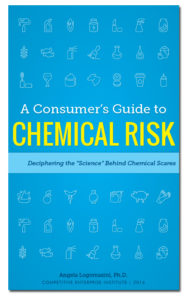When assessing the potential associations between a chemical and health effects, one of researchers most challenging tasks involves finding reliable data, i.e., a representative sample of the population under examination. Ideally, a randomly selected large sample of a population provides the best chance of good data, but locating and developing such samples is difficult and expensive. Accordingly, researchers often work with less-than-ideal sample sizes, existing databases that offer imperfect data, or both.
Using data from databases offers researchers myriad opportunities for “data mining”—selectively pulling data out for statistical studies with the hope of finding meaningful relationships.
Researchers face a number of other challenges to establishing the validity of their findings. These include challenges associated with finding sufficient sample size, confounding factors, recall bias, and, researcher bias.
Browse the terms on the sidebar of this webpage for more information and/or download a copy of A Consumer’s Guide to Chemical Risk: Deciphering the “Science” Behind Chemical Scares.



[…] are many other reasons to doubt such a strong sounding conclusion. First, the sample is hardly random: 76 percent were women, about 60 percent were under 40 years old (30 percent were under 30 years […]